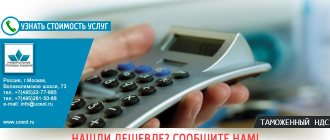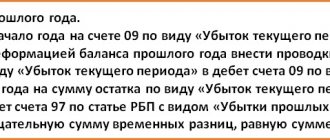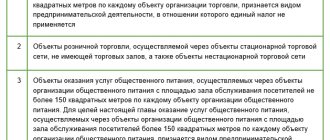Federal Law No. 302-FZ dated August 3, 2021 made adjustments to Ch. 21 of the Tax Code of the Russian Federation and outlined some changes in VAT, affecting mainly exporters and designed to simplify certain procedures for legal entities and individual entrepreneurs confirming the zero VAT rate. Changes in VAT for exporters from October 1, 2021 can only be applied to the sale of goods (implementation of work, services) for transactions carried out from October 1, 2021 (i.e., starting from the fourth quarter of 2021).
Features of export to the EAEU countries (changes in VAT for exporters from October 1, 2021)
Taxpayers now have the right to apply a 0% rate when exporting goods to the territory of the EAEU in cases provided for by the Treaty on the EAEU. A set of documents to confirm the zero rate is approved by the international treaty under consideration.
As for the specifics of submitting such documents, exporters to “near abroad countries” and EAEU countries can submit transport and shipping documents simultaneously with the declaration in order to confirm the 0% VAT rate, if the List of applications for the import of goods and payment of indirect taxes is submitted in electronic form. The Federal Tax Service reserves the right to request any documents from the List selectively.
Zero VAT rate for exports
Export of goods, like most other transactions, is subject to VAT.
However, in this case the tax rate is different from the usual one and is 0%.
The list of transactions for which a 0% VAT rate is applied is given in paragraph 1 of Article 164 of the Tax Code of the Russian Federation. Thus, a company has the right to apply a zero VAT rate when selling:
- goods in accordance with the customs export procedure (subclause 1);
- works (services) related to the export of goods and import of goods into the Russian Federation (subclauses 2.1 – 3.1);
- services for the international transportation of goods;
- works and services performed and provided by oil and petroleum products pipeline transport organizations for the transportation, transshipment or reloading of oil and petroleum products;
- services for organizing pipeline transportation of natural gas;
- re-export of goods in certain cases (for example, after processing procedures in a customs territory, free customs zone or free warehouse).
To use the zero VAT rate, the company must confirm the fact of export. To do this you need:
- collect documents confirming that the exporter actually exported the goods abroad of the Russian Federation (see table);
- fill out a VAT return and submit it to the tax office along with documents confirming export.
Documents to confirm the export of goods abroad
| Export to EAEU countries | Export to other countries |
| An agreement under which a buyer from an EAEU country imports products | Agreement or other transaction documents if there is no agreement (for example, offer and acceptance) |
| Application for import of goods and payment of indirect taxes from the buyer | A copy of the customs declaration or an electronic register (a separate register for each type of transaction) |
| Transport or shipping documents (consignment note TTN is recommended). | Copies of transport or shipping documents with customs marks (or their electronic register) |
| Other documents (invoices, bank statements) should be kept in case the tax office requires confirmation of the information specified in the declaration. | |
A zero rate means that amounts of input VAT that are paid to suppliers and are directly attributable to the costs of production and sale of exported goods can be deducted (reimbursed from the budget).
Example.
Calculation of income from the transaction taking into account export VAT The company purchased goods for sale in the amount of 120,000 rubles, paying the supplier VAT in the amount of 20,000 rubles. The company sells goods to Belarus. Let’s assume that the sales amount was 150,000 rubles. By applying a 0% rate, the company does not charge VAT for payment. The amount previously paid to the supplier in the amount of RUB 20,000. the company has the right to return. The income from the transaction is 30,000 rubles. (150,000 – 120,000). Taking into account the refunded VAT, it amounts to 50,000 rubles. (30,000 + 20,000).
Companies that carry out a one-time export operation often do not want to collect a package of “export” documents.
We also note that exporters in most cases use the services of carriers. Russian companies pay VAT at a rate of 0 percent on international transportation services. The problem is that some carriers also do not want to deal with zero rate confirmation and indicate VAT at the general rate on their invoices.
This leads to the fact that the exporter will not be able to deduct this tax. This is due to the fact that the required detail - the VAT rate - is indicated with an error. And this is a violation of the procedure for issuing an invoice, provided for in paragraph 2 of Article 169 of the Tax Code (see, for example, Ruling of the Supreme Court of the Russian Federation of April 27, 2018 No. 307 KG18-1802 in case No. A44-9467/2016).
However, starting in 2021, the problem has been resolved.
Answers to common questions about VAT changes for exporters from October 1, 2021
Question #1:
Have the deadlines for submitting documents confirming the zero VAT rate to the tax authorities changed?
Answer:
No, documents must be submitted simultaneously with the declaration.
Question #2:
For operations performed after October 1, 2021, copies of customs declarations are allowed to be provided without marks from the customs authority of the place of departure in order to confirm the 0% VAT rate for (re)exporting goods outside the EAEU. In what cases may it turn out that the application of a zero VAT rate will be considered unconfirmed?
Answer:
This can happen if the documents submitted to the tax service do not contain information about the information provided by the customs service. The taxpayer will be given 15 calendar days to provide explanations and at least some documents (they will be included in the request sent to the customs authorities). If confirmation of the export of goods does not follow even after submitting this request to the Federal Customs Service, the validity of applying the 0% VAT rate is considered unconfirmed.
Waiver of 0% VAT rate
From January 2021, exporting companies have the right to refuse to apply the zero VAT rate. Such favorable changes were made to paragraph 7 of Article 164 of the Tax Code of the Russian Federation by Federal Law No. 350-FZ dated November 27, 2017.
This right is given both to the exporters of goods themselves and to the providers of export-related services.
To refuse the zero VAT rate, you must submit an application to the tax office. This must be done no later than the 1st day of the quarter from which the exporting company plans to pay VAT at the general rate. You cannot refuse for less than a year.
It is possible to refuse zero VAT and pay tax at generally established rates only in relation to all export transactions. It will not work to apply different tax rates depending on who the buyer is.
The right to choose the general VAT rate for exports, granted by paragraph 7 of Article 164 of the Tax Code of the Russian Federation, should be reflected in the tax accounting policy. An accounting policy fragment might look like this:
“...when exporting goods (performing work, providing export-related services), the VAT rate of 0 percent is not applied.”
Export of goods for personal use to the EAEU countries
The Russian Ministry of Finance explained what VAT rate a company should apply if it sold goods for personal, family and household use exported outside the Russian Federation to citizens of the EAEU member states (letter dated May 20, 2019 No. 03-07-13/1/35971).
The export of goods sold from the territory of one EAEU member state to the territory of another EAEU member state is considered an export (clause 2 of the Protocol on the procedure for collecting indirect taxes and the mechanism for monitoring their payment when exporting and importing goods, performing work, providing services, which is Appendix No. 18 to the Treaty on the EAEU, hereinafter referred to as the Protocol). When exporting, a zero VAT rate is applied (clause 3 of the Protocol). But can this rate be used if goods for personal, family and household use were sold and exported by individual buyers to the EAEU countries?
Clause 3 of the Protocol provides that the zero VAT rate for the export of goods is applied subject to the submission to the tax authority of the documents provided for in clause 4 of the Protocol, justifying the application of the zero rate. Among them, in particular, there is an agreement (contract) concluded with a taxpayer of another member state, and an application for the import of goods and payment of indirect taxes, drawn up in the prescribed form with a mark from the tax authority of the EAEU country where the goods were exported regarding the payment of tax. That is, in order for an exporter to apply a zero VAT rate, it is necessary that the buyer be a payer of this tax in the EAEU country where the goods are exported.
But subparagraph 2 of paragraph 6 of Art. 72 of the Treaty on the EAEU directly stipulates that indirect taxes are not levied on the import of goods that are imported by individuals not for the purpose of business activity. Thus, citizens of the EAEU member states importing goods for personal, family and household use are not VAT payers and cannot submit a statement with a tax authority’s mark on tax payment. Consequently, the seller cannot apply a zero VAT rate when selling such goods. The Russian Ministry of Finance confirmed this in a commentary letter. Financial department specialists indicated that the sale to citizens of EAEU member states of goods for personal, family and household use is subject to VAT at the rates provided for by the legislation of the state from whose territory the goods are exported. That is, a rate of 10% or 20% should be applied depending on the type of product.
The Russian Ministry of Finance gave the same explanations before (letters dated December 12, 2017 No. 03-07-14/82680, dated June 30, 2016 No. 03-07-13/1/38236). Tax authorities also agree with the opinion of financiers (letters from the Federal Tax Service of Russia dated December 31, 2015 No. SD-3-3/ [email protected] , dated November 6, 2015 No. SD-3-3/ [email protected] ).
In judicial practice, there are two rulings of the Supreme Court of the Russian Federation (dated 03/21/2016 No. 309-KG16-681 and dated 02/29/2016 No. 309-KG15-20141), in which it recognized the legality of applying a zero VAT rate on the sale of cars exported to Kazakhstan by individuals persons who are not individual entrepreneurs. But these decisions concerned the situation when the Treaty on the EAEU was not yet in force and in Kazakhstan at that time individuals were VAT payers when importing cars. From January 1, 2021 from Art. 276.2 of the Tax Code of the Republic of Kazakhstan, which the courts referred to, excludes the provision that individuals importing vehicles are recognized as VAT payers (Law of the Republic of Kazakhstan dated December 3, 2015 No. 432-V). Therefore, the position of the Supreme Court regarding the export of goods by individuals to the EAEU countries is currently inapplicable.
The EEC has prepared an overview of the tax systems of the EAEU states
The review examines changes in the national legislation of the states of the Eurasian Economic Union (EAEU): the Republic of Armenia, the Republic of Belarus, the Republic of Kazakhstan, the Kyrgyz Republic and the Russian Federation. In addition, the state of their tax systems is analyzed, basic tax rates and other information and reference materials are provided.
In an address to readers, Timur Zhaksylykov, member of the Board (Minister) for Economics and Financial Policy of the EEC, noted that tax legislation is an area of law whose norms are constantly being improved, while the Commission monitors changes in the legislation of member states in this area and considers current issues.
“The Treaty on the EAEU outlined the basic principles of indirect taxation: national regime in the field of indirect taxes, harmonization of excise tax rates on certain most sensitive goods, improvement of the administration of indirect taxes, imposition of VAT on trade in goods based on the country of destination, as well as at the place of sale of works and services, - notes Timur Zhaksylykov. – If we talk about tax harmonization in the EAEU, it is worth noting significant progress in unifying approaches to indirect taxation. Different VAT rates in countries are explained, first of all, by differences in economic systems (the ratio of the market (raw materials) and structural (industrial) components), as well as ongoing economic reforms. It is very important to note the presence of tax sovereignty of the member states.”
According to Timur Zhaksylykov, the most important task of the Eurasian Economic Commission in the field of information exchange is to establish effective exchange and create opportunities for the speedy transfer of all flows online.
“In addition to improving the electronic exchange of information between tax authorities, it is necessary to further develop the service functions of tax authorities and actively implement, for example, online checking of the status of applications for the import of goods and payment of indirect taxes. All these actions are aimed at improving the conditions for doing business,” emphasizes the EEC Minister. In preparing the publication, statistical and analytical data were used, the entire scope of the regulatory legal framework of the EAEU countries in the tax sphere was analyzed, and specific situations arising in the course of mutual trade within the EAEU were also considered.
The review includes a number of practical issues that may be of interest to specialists in various fields of business, workers undergoing retraining or advanced training.
The review will also be useful to students and researchers who are beginning to study the peculiarities of taxation when organizations conduct foreign economic activities.
The publication includes excerpts from the Treaty on the EAEU (Section XVII “Taxes and Taxation”), Appendix No. 18 to it - “Protocol on the procedure for collecting indirect taxes and the mechanism for monitoring their payment when exporting and importing goods, performing work, providing services.”
VAT within the EAEU
As we know, the Eurasian Economic Union (EAEU) is an international integration economic association, the agreement on the creation of which was signed on May 29, 2014 in the city of Astana.
For reference: came into force on January 1, 2015.
The composition included Russia, Kazakhstan, Belarus, Armenia and later from August 12, 2015. The Republic of Kyrgyzstan joined.
The EAEU was created on the basis of the Customs Union of the Eurasian Economic Community (EurAsEC), the purpose of which is to strengthen the economies of the participating countries and “bring closer to each other”, to modernize and increase the competitiveness of the participating countries in the world market.
The main document of the EAEU is the “Treaty on the Eurasian Economic Union”.
The main advantages of the creation of the EAEU are that the consumer, first of all, has a greater opportunity to choose goods and services, as a result of which high competition leads to market containment of prices for imported and local products. An increase in imports entails the arrival of new equipment and technologies.
The main advantage for consumers should be considered high requirements for the quality of products that meet international standards from countries that are members of the EAEU. New jobs are being created through the opening of joint production facilities and the expansion of existing manufacturers that are focused on the sales markets of partner countries.
All this helps reduce unemployment and increase the well-being of the people.
In addition, the favorable tax climate in the Republic of Kazakhstan contributes to the growth of the number of enterprises with the participation of Russian and Belarusian capital.
Thus, in the Karaganda region, open joint ventures and representative offices increased by more than 1.3 times, which contributes to the opening of jobs and increased tax revenues.
This year marks 6 years since the transfer of the function of collecting indirect taxes in mutual trade of the EAEU member states from customs authorities to tax authorities.
If we focus on statistical data, then:
One of the evidence of the growth and deepening of integration of the EAEU member states is the increase in the number of participants in foreign economic activity.
Thus, the number of importers from the territory of the Russian Federation has increased more than 2 times, in the Republic of Belarus - more than 1.5 times.
Accordingly, the amount of import revenues also increases.
In 8 months this year 8.8 billion tenge have already been received in the Kazybek bi district alone.
Mainly imported from the EAEU countries are: equipment and spare parts for them, spare parts for mining equipment, vehicles, chemicals, ferrous metals, detergents, etc. And fruits and vegetables are imported in large quantities from the territory of the Republic of Kyrgyzstan.
Also, one of the areas of the Indirect Tax Administration Department is the administration of imports and monitoring the completeness of the receipt of indirect taxes within the framework of the Treaty of the Eurasian Economic Union.
VAT payers within the EAEU are persons importing goods into the territory of the Republic of Kazakhstan from the territory of the EAEU member states.
When importing goods into the territory of the Republic of Kazakhstan from the territory of the EAEU member states, the taxpayer is obliged to submit to the tax authority at the place of location (residence) a declaration on indirect taxes (form 320.00), on paper and in electronic form or only in electronic form no later than the 20th day month following the tax period.
Along with the declaration, the importing taxpayer is required to submit to the tax authority:
1. Application for the import of goods and payment of indirect taxes (form 328.00);
2. Bank statement confirming the actual payment of indirect taxes (receipt);
3. Agreements (contracts), invoices and shipping documents.
Indirect taxes are paid at the location (place of residence) of taxpayers no later than the 20th day of the month following the tax period.
Taxpayers importing medicines, banknotes and coins, goods for humanitarian aid, space objects and other goods in accordance with tax legislation are exempt from paying VAT when importing goods.
In addition, according to the Treaty on the Eurasian Union, individuals importing goods not for business purposes are exempt from paying indirect taxes. Those. In the case of importing vehicles for personal use, indirect taxes are not levied.
However, it will be possible to import vehicles from Kyrgyzstan without paying customs duties only from 2025.
Because within the framework of the agreement on the accession of the Kyrgyz Republic to the agreement on the EAEU, a protocol on special conditions and transitional provisions is provided, where, in terms of the status of cars for personal use, the date is January 1, 2014.
Therefore, vehicles that were imported after January 1, 2014. are recognized as EAEU goods if the owner of the vehicle pays the difference in the rate of customs duties and taxes. It will be possible to import without customs duties only from 2025.
Head of Administration Department
indirect taxes within the customs union
State Revenue Administration
in the district named after Kazybek bi
Syzdykova S.
Source: DGD for Karaganda region








